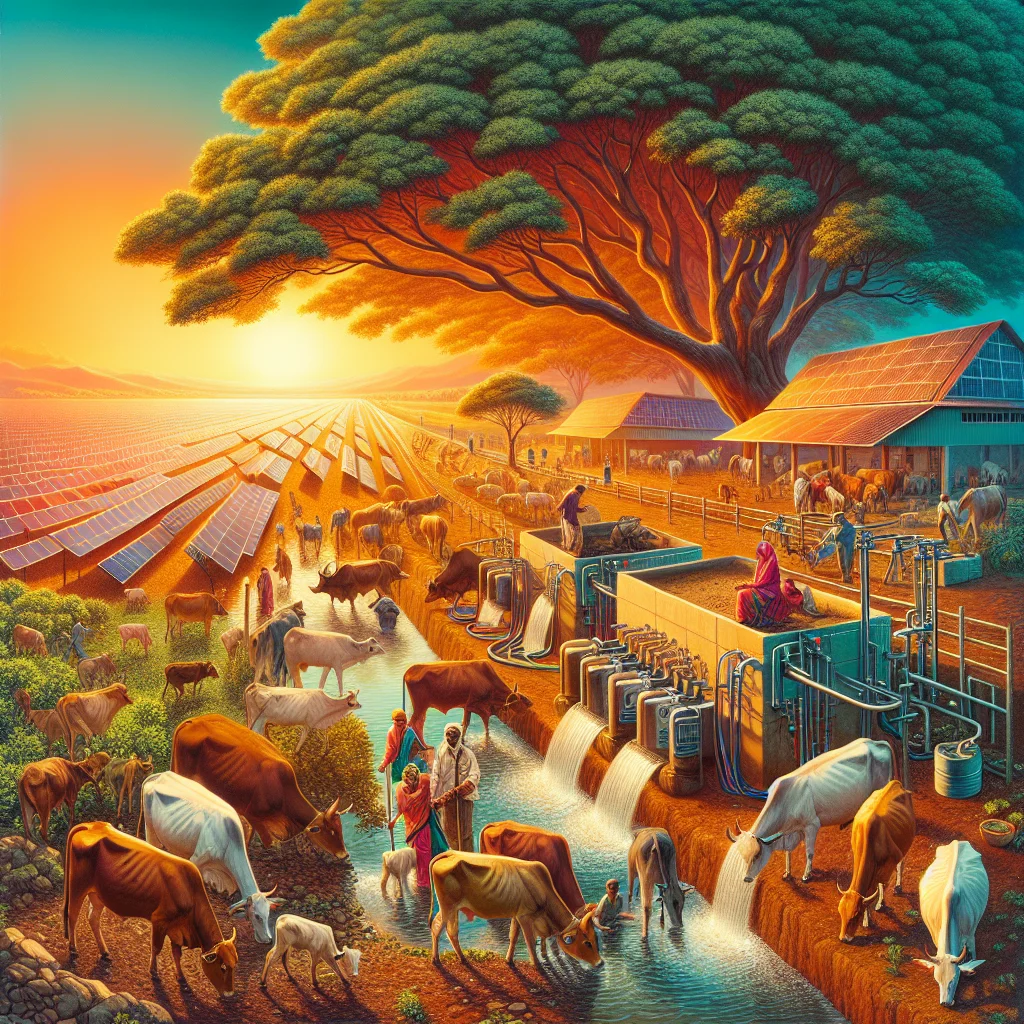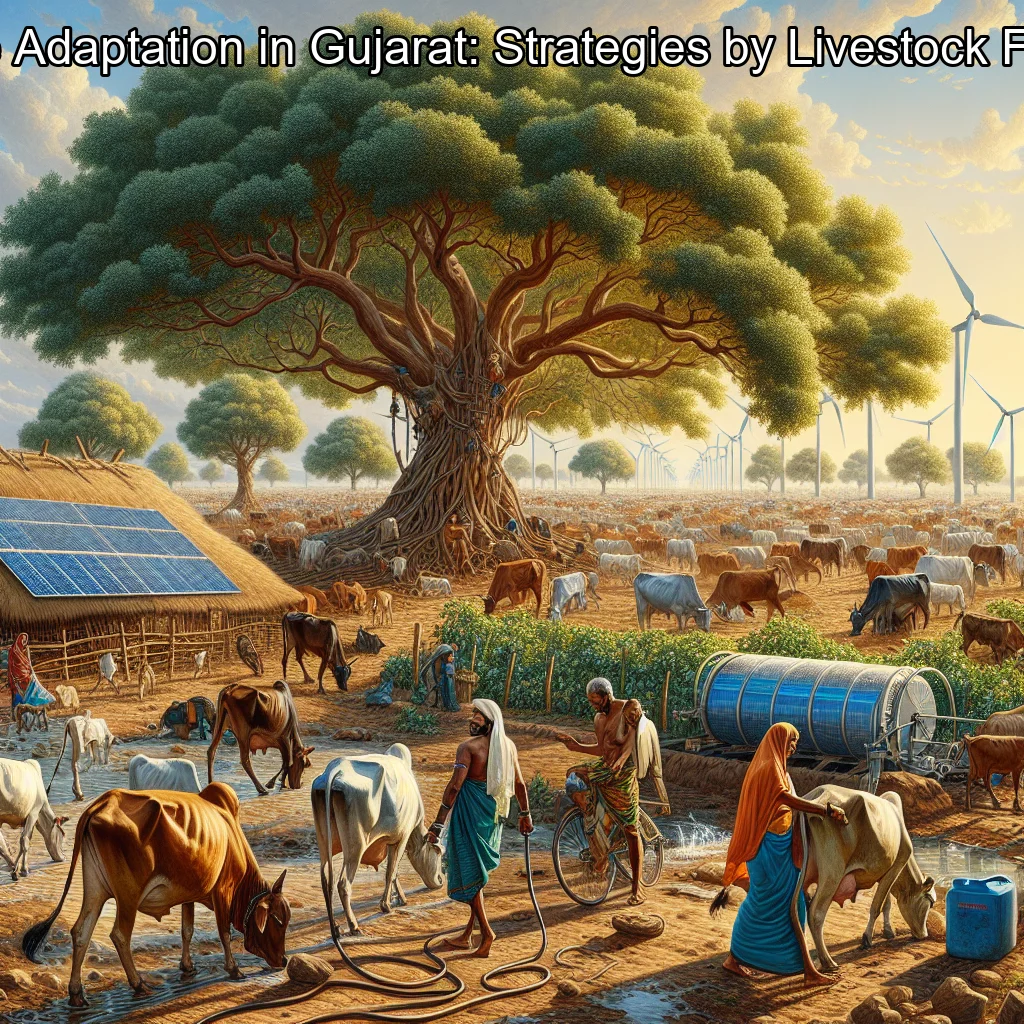Climate change poses a significant challenge to agriculture worldwide, and livestock farmers in Gujarat, India, are no exception. As temperatures rise and weather patterns shift, these farmers are forced to adapt their practices to sustain their livelihoods. This article will explore the innovative strategies being employed by Gujarat’s livestock farmers to cope with climate change, highlighting real-world examples and providing insights into their resilience.
The Impact of Climate Change on Livestock Farming
Gujarat, a state with a rich agricultural history, is heavily dependent on livestock farming. However, the rise in temperatures, erratic rainfall patterns, and increased frequency of extreme weather events are threatening this crucial sector. These changes lead to:
- Reduced availability of grazing land
- Decline in water resources
- Increased heat stress on animals
- Greater vulnerability to diseases
These challenges necessitate adaptive strategies to ensure the sustainability and profitability of livestock farming in the region.
Innovative Adaptation Strategies
Sustainable Water Management
Water scarcity is a pressing issue for livestock farmers in Gujarat. To combat this, farmers are implementing sustainable water management practices, including:
- Rainwater Harvesting: Collecting and storing rainwater during the monsoon season helps maintain a steady water supply throughout the dry months.
- Drip Irrigation and Micro-irrigation: These techniques efficiently deliver water to crops and pastures, reducing water usage and preserving resources for livestock.
Diversified Livestock Breeding
To withstand the challenges posed by climate change, farmers are diversifying their livestock breeds. This involves:
- Breeding Heat-Resilient Varieties: By selecting breeds that are more resistant to heat stress, farmers can maintain productivity even as temperatures rise.
- Crossbreeding: Combining local breeds with more resilient ones enhances disease resistance and adaptability to environmental changes.
Improved Feeding Practices
With grazing lands diminishing, farmers are adopting alternative feeding strategies to ensure their livestock receive adequate nutrition:
- Fodder Cultivation: Growing high-yield, drought-resistant fodder crops provides a reliable food source.
- Supplementary Feeding: Using agricultural by-products and formulated feed supplements enhances the nutritional intake of livestock.
Real-World Examples
In the district of Kutch, known for its arid conditions, farmers have successfully implemented rainwater harvesting systems, resulting in a 30% increase in water availability. Similarly, in Saurashtra, the introduction of heat-tolerant buffalo breeds has led to a 20% improvement in milk production during the peak summer months.
The Role of Government and NGOs
The government of Gujarat, in collaboration with non-governmental organizations (NGOs), plays a pivotal role in supporting livestock farmers through:
- Training and Workshops: Providing education on climate-resilient practices empowers farmers with the knowledge needed to adapt effectively.
- Financial Assistance and Subsidies: Offering financial support for the adoption of new technologies and practices reduces the economic burden on farmers.
Conclusion: Building a Resilient Future
As climate change continues to impact agriculture globally, the resilience and adaptability of Gujarat’s livestock farmers serve as an inspiring example. By embracing innovative strategies such as sustainable water management, diversified breeding, and improved feeding practices, these farmers are not only sustaining their livelihoods but also contributing to a more sustainable agricultural future.
To ensure continued success, it is crucial for stakeholders, including government bodies, NGOs, and the farmers themselves, to work collaboratively. By fostering knowledge exchange and providing the necessary resources, Gujarat can build a resilient agricultural sector capable of withstanding the challenges of a changing climate.
Call to Action: If you’re interested in learning more about sustainable farming practices or wish to support Gujarat’s farmers, consider reaching out to local agricultural organizations or exploring volunteer opportunities. Together, we can help build a sustainable future for agriculture in Gujarat and beyond.

